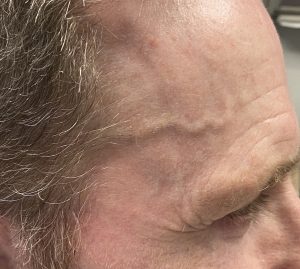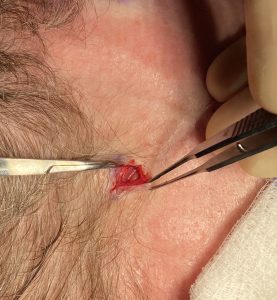Background: The temporal artery is best known in plastic surgery for its contribution in reconstruction as the vascular supply for local tissue flaps. The goal in these procedures is preservation of the blood flow to the artery to keep the transferred tissues alive. Conversely the strong blood flow in the temporal artery can have an aesthetic negative effect as it can make its serpiginous pathway into the forehead visible.
In treating many prominent temporal arteries I have observed that they consist of two types regardless of gender. These types differ in their visible pathway into the forehead based on which branch is enlarged. These different arterial pathways affect how many ligation points are needed.
The most common type of prominent temporal artery, which I will call Type 1, comes from the enlarged anterior branch of the superficial temporal artery. (STA) This pathway is well known and appears in any anatomic drawing or cadaveric dissection. It is easily diagnosed as it leaves the temporal hairline on the side of the forehead, becomes tortuous at it approaches the bony temporal line and then turns at 90 degrees to head up into the frontal scalp. When hair is not present even the Y configuration from the anterior branch emanates can become visible.
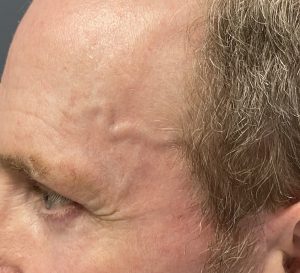
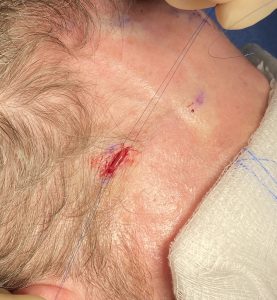

The final ligation point is done at the last visible extent of the artery before it heads into the scalp hairline.

The six location sites were then closed with small resorbable sutures and the four behind the hairline were covered with small flesh-colored tapes.
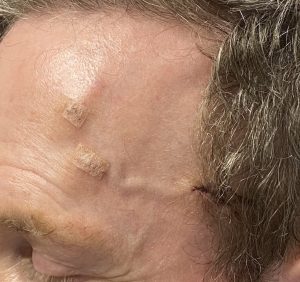
Case Highlights:
1) Prominent temporal arteries can arise from either the superior anterior branch of the superficial temporal artery (STA) or from the inferior frontal branch off the main trunk of the temporal artery.
2) Surgical treatment of the prominent anterior trunk of the STA may require as few as 3 ligation areas.
3) The definitive test of elimination of the prominent temporal artery is the elimination of the arterial doppler signal.
Dr. Barry Eppley
World-Renowned Plastic Surgeon



